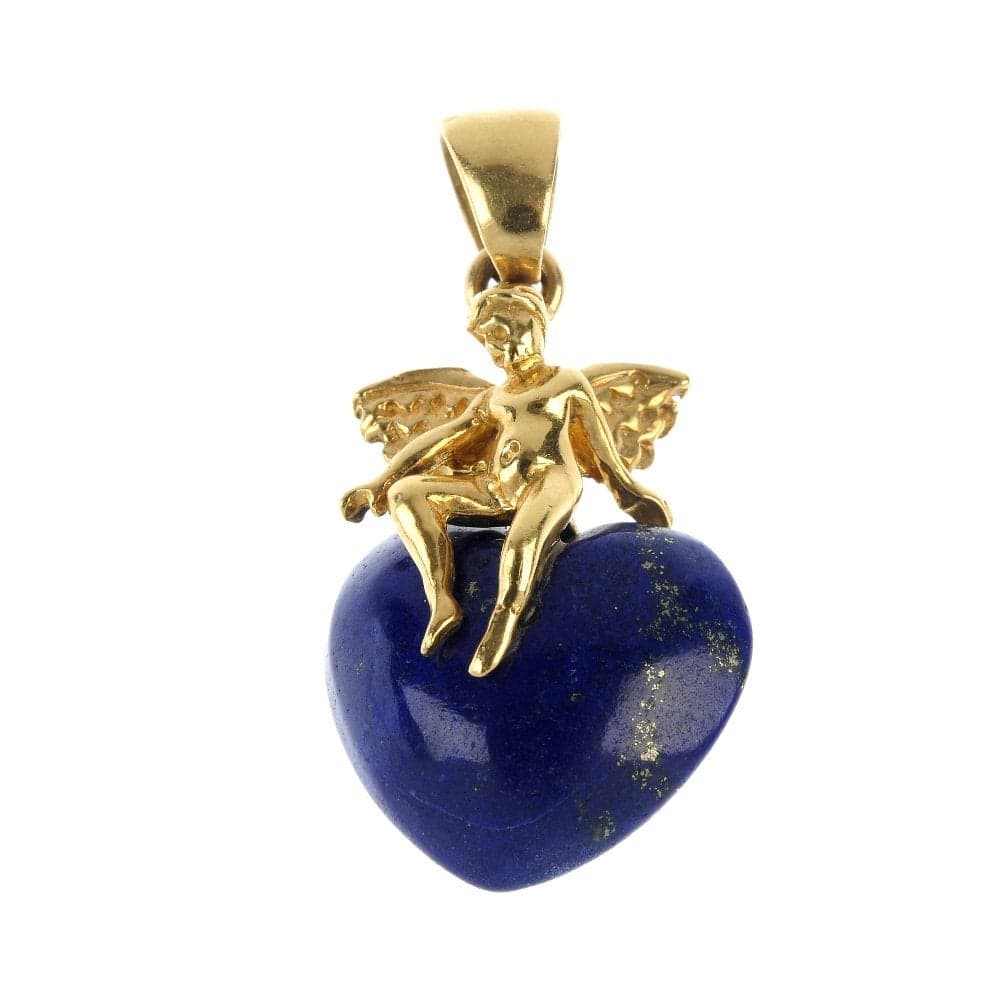Lapis Lazuli Symbolism
How do you say “love me” with a stone? Learn about lapis lazuli symbolism and legends. This beautiful blue mineral has fascinated people for millennia.
2 Minute Read
Lapis Lazuli and Ancient Myths
Lapis lazuli legends are among the oldest in the world. The myth of Inanna, the Sumerian goddess of love, and her descent and return from the underworld may date from as early as 4,000 BCE. Inanna entered the underworld bearing the insignias of her rank, including a lapis lazuli necklace and rod.
"In ancient Sumer," writes Scott Cunningham in his Encyclopedia of Crystal, Gem, and Metal Magic, "lapis lazuli has timeless associations" with royalty and deities. People believed the stone contained "the soul of the deity, who would 'rejoice in its owner.'"
In Ancient Egypt, pharaohs favored lapis lazuli, and judges wore emblems of Maat, the goddess of truth, made from the stone.
Many ancient civilizations prized lapis lazuli. To them, the stone had religious significance and reflected the high status of their rulers.
Lapis Cylinder Seals
In ancient times, cylinder seals carved from lapis lazuli were used to impress official seals, signatures, or religious inscriptions on wet clay. When rolled across the clay, these cylinders created very detailed impressions with both text and images. The seals themselves could be worn as necklaces, too. Lapis lazuli could very well have sealed or marked texts containing its own legends!
Lapis Lazuli and Ultramarine Blue
The name "lapis lazuli" means "blue stone." The gorgeous blue color of lapis lazuli has attracted the attention of artists for thousands of years. Ancient Egyptians used it to create blue cosmetics. In the Renaissance, painters ground the stone to make ultramarine, a blue pigment used for skies and seas.
Lapis Lazuli Symbolism and Gem Language
In the English and French royal courts of the 18th century, a kind of elaborate and symbolic "gem language" was used to convey messages discreetly. ("Flower language" was also used at this time and is still used today). People would set bracelets, brooches, rings, etc., with gems, the first letters of which conveyed a motto or sentiment. Lapis lazuli could stand for "good luck" or "love me," depending on its usage and setting (and probably on who was sitting next to you).
Of course, if you find the acrostic technique too subtle, you can always try the direct approach.
Modern Lapis Lazuli Symbolism
Today, some people associate lapis lazuli with wisdom, love, and healing and claim it nurtures and promotes psychic ability. (Although I have met one "psychic" lady so laden with the stones around her neck that Inanna herself would have fallen at her feet, weeping).
Fara Braid
International Gem Society
Related Articles
Lapis Lazuli Value, Price, and Jewelry Information
Understanding Gem Synthetics, Treatments, And Imitations, Part 4: Synthetic Gemstone Guide
What Were the Gemstones of the Breastplate of Aaron?
Destructive Gemstone Tests: Dye Testing
Never Stop Learning
When you join the IGS community, you get trusted diamond & gemstone information when you need it.
Get Gemology Insights
Get started with the International Gem Society’s free guide to gemstone identification. Join our weekly newsletter & get a free copy of the Gem ID Checklist!
